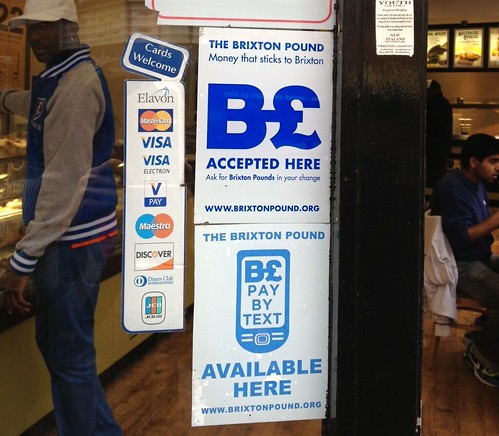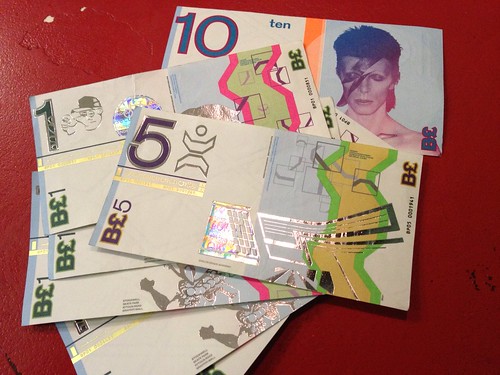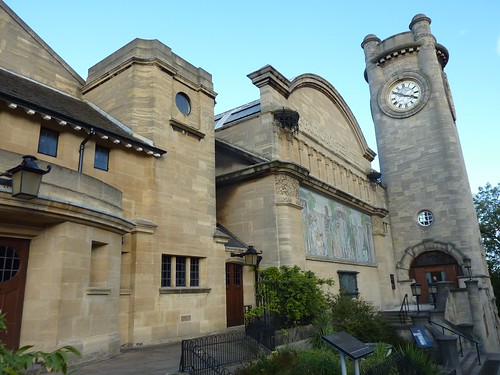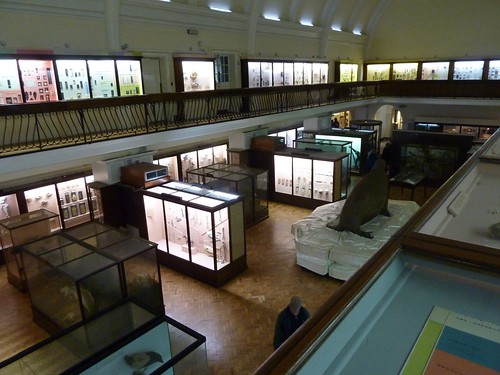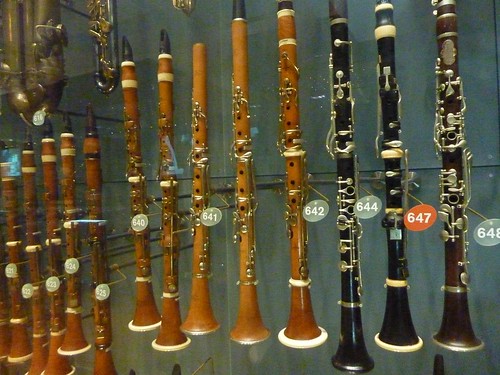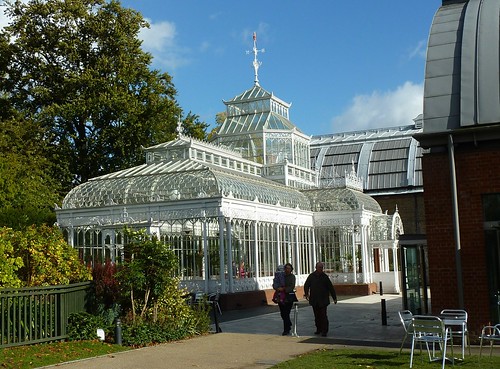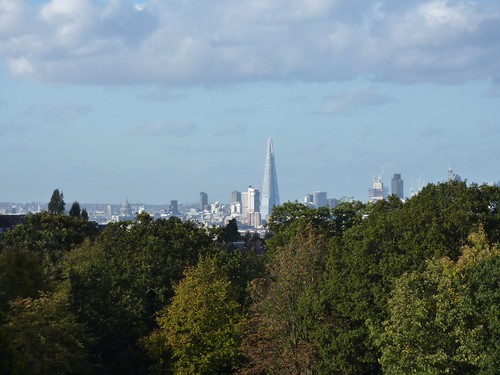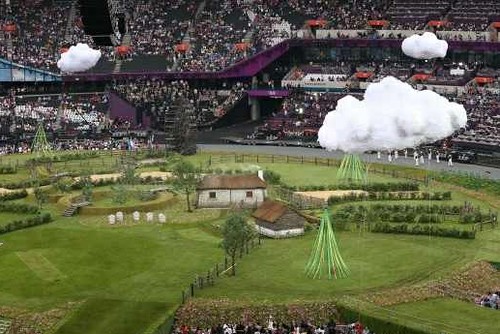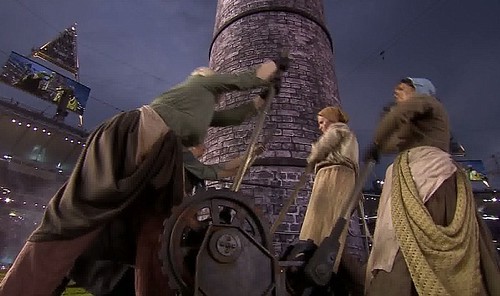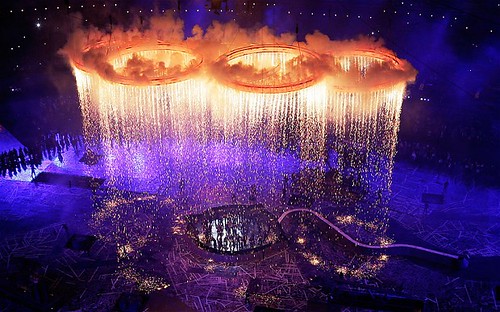It's been another week of the leisurely work-free life here at Go Stay Work Play Live. At this rate I'll have to change the name of the blog to Go Stay Sleep Play Live. Or perhaps Go Stay Sleep Beg Go-on-the-dole. The search for work has seen a few vaguely promising things come up, though all are quite far in the future leaving me with the option of pursuing something less interesting/appropriate right away (not that there seems to be much of that anyway) or biding my time in the hopes that one of the much better things will pan out. For now I'm picking Door Number Two, we'll see how long that can last.
In the mean time, I'm spending a lot more time enjoying my local neighborhood, Brixton. Brixton has appeared in the blog a few times before, like when I wrote a little bit about the riots last summer and when I told you about the excellent Brixton Market. I've been hanging around at the market a lot more these days because one of my Favourite Things is to sit in a nice café with a latté and a pastry and do the crossword or noodle around on the iPad or blog, which, in fact, is what I am doing as I write this. And while I was busy up in Stratford about 6 new restaurants opened in the market, which is quite cool and means I've been having fun wandering through Brixton Village and Market Row trying different spots and enjoying the buzz. Let's just say I'm down wit Da Hood these days.
So, today I'm blogging about a very local phenomenon - the Brixton Pound.
As I imply in the title of this post, the Brixton Pound is "money that sticks to Brixton" and is exactly what it sounds like - a local currency that only works in Brixton. Established in September of 2009, the Brixton pound just celebrated its third birthday. The idea of a local currency is not unique to Brixton; in the UK the communities of Totnes, Stroud and Lewes all have their own alternate "community currency" - a system of real, physical notes that exist alongside pounds sterling and are accepted by local businesses who subscribe to the scheme (similar systems operate in different places around the world). Obviously the intention is to encourage people to spend their money locally, thus supporting local businesses. It's not clear to me whether the acceptance of Brixton pounds is specifically limited only to local independent businesses and market traders or whether chain stores are also eligible. But I can say that I've never seen the friendly sticker in the window of a Starbucks or a Boots or a Marks & Spencer, so I suspect that even if there's no specific prohibition, local operators of big chain outlets and franchises just don't have the independence and flexibility to participate.
I've been vaguely aware of Brixton pounds for a while, but haven't had the time and desire to look into it until recently. Now, though, I'm having fun scouting out places to spend B£ (that's the official abbreviation) as an adjunct to my café-dwelling activities. Already I've had coffee, a few full English breakfasts and even a hair cut and paid for them all with Brixton pounds.
The notes themselves are quite nice looking. They're issued in £1, £5, £10 and £20 denominations, with famous Brixtonians featured on each note, and with watermarks and holograms and everything, just like real bank notes. (No coins - small change is given in pounds sterling.) The current series features a local community activist, Lenford Garrison on the £1, a basketball-playing immigrant from Sudan, Luol Deng on the £5, and Second World War British secret agent, Violette Szabo on the £20. All of them lived or worked in Brixton. Undoubtedly though, the crown jewel of the current series of Brixton pounds in the £10, featuring David Bowie!
Technically, Brixton pounds are not actually legal tender but "vouchers" and are not exchangeable back into sterling, though the entire value of all B£ in circulation is backed by an equal amount of sterling held in a local bank. However, there is a local payday loans place where members of the public can exchange the notes back into sterling for a fee and registered traders can redeem B£ at predetermined exchange points. Interestingly, the vouchers also expire. The current series replaced the original 2009 offering, which I think are no longer accepted.
I picked up my crop of B£ at one of the somewhat limited number of places you can buy notes (as opposed to asking for them when being given change at a participating shop). Morley's department store is a local institution that might just deserve a blog of its own if only because it was established in 1880s and is still one of the few independent department stores in operation. Morley's is cool, as was the woman who sold me my Brixton pounds. She was quite pleased to be able to offer a crisp new £10 Bowie and reported that the currency is actually quite popular.
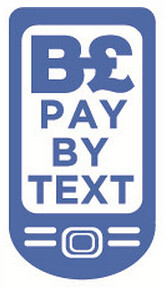 The thing that I find coolest about B£, though, is the new pay-by-text option, which is exactly what it sounds like. Pay-by-text is what got me into Brixton pounds to begin with, because it seemed so cool to be able to pay for my coffee on my phone. This kind of technology has been in operation in parts of Africa since 2007 (There's a good overview of M-pesa in a CBC radio episode of Spark here: ). M-pesa, the original African system, allows you to purchase credit that's "stored" on your phone and can then be transferred to other users - businesses, local government, and individuals - via text message. It's been hugely successful in Kenya in particular, where it's estimated that 17 million accounts are registered. With Brixton pounds you set up an account online and charge it up by transferring money from your bank account. When you want to pay someone you simply text the B£ phone number with the command "pay", your secret PIN, the name of the business, and the amount. Then whoosh, off it goes. You get a text confirming the transaction and reporting your new balance, and the business gets a text confirming the payment. It's easy and fun.
The thing that I find coolest about B£, though, is the new pay-by-text option, which is exactly what it sounds like. Pay-by-text is what got me into Brixton pounds to begin with, because it seemed so cool to be able to pay for my coffee on my phone. This kind of technology has been in operation in parts of Africa since 2007 (There's a good overview of M-pesa in a CBC radio episode of Spark here: ). M-pesa, the original African system, allows you to purchase credit that's "stored" on your phone and can then be transferred to other users - businesses, local government, and individuals - via text message. It's been hugely successful in Kenya in particular, where it's estimated that 17 million accounts are registered. With Brixton pounds you set up an account online and charge it up by transferring money from your bank account. When you want to pay someone you simply text the B£ phone number with the command "pay", your secret PIN, the name of the business, and the amount. Then whoosh, off it goes. You get a text confirming the transaction and reporting your new balance, and the business gets a text confirming the payment. It's easy and fun.
My favorite thing about pay-by-text, besides the Star Trek Factor, is that when you top up by transferring directly from your bank account they actually credit you an extra 10% as an incentive. So top up £20 and you get B£22! Also, some places give you incentives to use B£, so it can become cost effective very quickly. My local pub the White Horse lists prices in sterling and B£, and the B£ prices are always lower (B£5 as opposed to £6 sterling, for example). And a coffee place in the Market does a two-for-one deal on coffee when you pay by text. Add this to the bonus you get when you top up and it just makes sense.
The latest news about the Brixton pound is also cool, and a UK first. Lambeth Council (the local authority of which Brixton is a part) has just introduced a scheme whereby council employees can elect to have a portion of their salaries paid in electronic Brixton Pounds. As an incentive, they get an extra 10% on the portion that's paid in the local currency, just like when I top up my account electronically. Apparently more than 120 people have already signed up for the plan. And they're setting up a small number of local charities who can receive donations in electronic B£. Brixton rocks.
Even a year into its existence, the Brixton Pound still had its skeptics. This Guardian article from 2010 reported that just £30,000 worth of the B£200,000 printed were in circulation. But I think that now, three years in, it has to be conceded that Brixton pounds have traction. With the number of businesses accepting B£ increasing (200 now participate), the new series of notes in circulation, the pay-by-text scheme underway, and the Lambeth Council wages-in-B£ plan launching, it seems that Brixton pounds are a viable, if niche, means of payment here in Da Hood.
And now if you'll excuse me I need to fork over a few Lenford Garrisons and head home before I actually become welded to me seat here in the lovely Rosie's Café. More next week from the nearest friendly coffe spot...
In the mean time, I'm spending a lot more time enjoying my local neighborhood, Brixton. Brixton has appeared in the blog a few times before, like when I wrote a little bit about the riots last summer and when I told you about the excellent Brixton Market. I've been hanging around at the market a lot more these days because one of my Favourite Things is to sit in a nice café with a latté and a pastry and do the crossword or noodle around on the iPad or blog, which, in fact, is what I am doing as I write this. And while I was busy up in Stratford about 6 new restaurants opened in the market, which is quite cool and means I've been having fun wandering through Brixton Village and Market Row trying different spots and enjoying the buzz. Let's just say I'm down wit Da Hood these days.
So, today I'm blogging about a very local phenomenon - the Brixton Pound.
As I imply in the title of this post, the Brixton Pound is "money that sticks to Brixton" and is exactly what it sounds like - a local currency that only works in Brixton. Established in September of 2009, the Brixton pound just celebrated its third birthday. The idea of a local currency is not unique to Brixton; in the UK the communities of Totnes, Stroud and Lewes all have their own alternate "community currency" - a system of real, physical notes that exist alongside pounds sterling and are accepted by local businesses who subscribe to the scheme (similar systems operate in different places around the world). Obviously the intention is to encourage people to spend their money locally, thus supporting local businesses. It's not clear to me whether the acceptance of Brixton pounds is specifically limited only to local independent businesses and market traders or whether chain stores are also eligible. But I can say that I've never seen the friendly sticker in the window of a Starbucks or a Boots or a Marks & Spencer, so I suspect that even if there's no specific prohibition, local operators of big chain outlets and franchises just don't have the independence and flexibility to participate.
I've been vaguely aware of Brixton pounds for a while, but haven't had the time and desire to look into it until recently. Now, though, I'm having fun scouting out places to spend B£ (that's the official abbreviation) as an adjunct to my café-dwelling activities. Already I've had coffee, a few full English breakfasts and even a hair cut and paid for them all with Brixton pounds.
The notes themselves are quite nice looking. They're issued in £1, £5, £10 and £20 denominations, with famous Brixtonians featured on each note, and with watermarks and holograms and everything, just like real bank notes. (No coins - small change is given in pounds sterling.) The current series features a local community activist, Lenford Garrison on the £1, a basketball-playing immigrant from Sudan, Luol Deng on the £5, and Second World War British secret agent, Violette Szabo on the £20. All of them lived or worked in Brixton. Undoubtedly though, the crown jewel of the current series of Brixton pounds in the £10, featuring David Bowie!
Yep, it's true. Ziggy Stardust was born and lived in Brixton until he was six years old. See how cool this place is?
I picked up my crop of B£ at one of the somewhat limited number of places you can buy notes (as opposed to asking for them when being given change at a participating shop). Morley's department store is a local institution that might just deserve a blog of its own if only because it was established in 1880s and is still one of the few independent department stores in operation. Morley's is cool, as was the woman who sold me my Brixton pounds. She was quite pleased to be able to offer a crisp new £10 Bowie and reported that the currency is actually quite popular.
 The thing that I find coolest about B£, though, is the new pay-by-text option, which is exactly what it sounds like. Pay-by-text is what got me into Brixton pounds to begin with, because it seemed so cool to be able to pay for my coffee on my phone. This kind of technology has been in operation in parts of Africa since 2007 (There's a good overview of M-pesa in a CBC radio episode of Spark here: ). M-pesa, the original African system, allows you to purchase credit that's "stored" on your phone and can then be transferred to other users - businesses, local government, and individuals - via text message. It's been hugely successful in Kenya in particular, where it's estimated that 17 million accounts are registered. With Brixton pounds you set up an account online and charge it up by transferring money from your bank account. When you want to pay someone you simply text the B£ phone number with the command "pay", your secret PIN, the name of the business, and the amount. Then whoosh, off it goes. You get a text confirming the transaction and reporting your new balance, and the business gets a text confirming the payment. It's easy and fun.
The thing that I find coolest about B£, though, is the new pay-by-text option, which is exactly what it sounds like. Pay-by-text is what got me into Brixton pounds to begin with, because it seemed so cool to be able to pay for my coffee on my phone. This kind of technology has been in operation in parts of Africa since 2007 (There's a good overview of M-pesa in a CBC radio episode of Spark here: ). M-pesa, the original African system, allows you to purchase credit that's "stored" on your phone and can then be transferred to other users - businesses, local government, and individuals - via text message. It's been hugely successful in Kenya in particular, where it's estimated that 17 million accounts are registered. With Brixton pounds you set up an account online and charge it up by transferring money from your bank account. When you want to pay someone you simply text the B£ phone number with the command "pay", your secret PIN, the name of the business, and the amount. Then whoosh, off it goes. You get a text confirming the transaction and reporting your new balance, and the business gets a text confirming the payment. It's easy and fun.Here's me paying for coffee, topping up, and then getting my hair cut. I actually found my new local hair stylist in the list of people who accept pay-by-text. She got good reviews online, and I can walk there instead of getting on the Tube to King's Road and feeding my money into a chain store, so it was all very cool. Coolest of all was that the cut itself was really good. Thanks Jayne!
The latest news about the Brixton pound is also cool, and a UK first. Lambeth Council (the local authority of which Brixton is a part) has just introduced a scheme whereby council employees can elect to have a portion of their salaries paid in electronic Brixton Pounds. As an incentive, they get an extra 10% on the portion that's paid in the local currency, just like when I top up my account electronically. Apparently more than 120 people have already signed up for the plan. And they're setting up a small number of local charities who can receive donations in electronic B£. Brixton rocks.
Even a year into its existence, the Brixton Pound still had its skeptics. This Guardian article from 2010 reported that just £30,000 worth of the B£200,000 printed were in circulation. But I think that now, three years in, it has to be conceded that Brixton pounds have traction. With the number of businesses accepting B£ increasing (200 now participate), the new series of notes in circulation, the pay-by-text scheme underway, and the Lambeth Council wages-in-B£ plan launching, it seems that Brixton pounds are a viable, if niche, means of payment here in Da Hood.
And now if you'll excuse me I need to fork over a few Lenford Garrisons and head home before I actually become welded to me seat here in the lovely Rosie's Café. More next week from the nearest friendly coffe spot...
The view from my table at Rosie's Café, Market Row, Brixton Market.
And yes, they take Brixton Pounds.

